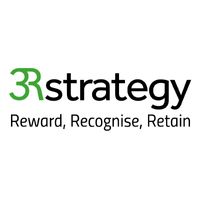Your pension comms are speaking to the wrong generation - here's how to fix it
Picture this: you're running a pension information session. Half your audience is checking their phones while the other half is frantically taking notes. Welcome to the multigenerational workforce, where one size fits nobody.
Last week, an HR director told me their pension provider had created "engaging" materials featuring a photograph of a retired person on a yacht. Their youngest employee? 22. Their average age? 34. Something wasn't adding up.
The uncomfortable truth about pension engagement
Here's what keeps reward professionals up at night: we know pensions matter, but we're failing to make them matter to everyone. Only 18% of 18–34-year-olds feel confident about retirement planning, according to the Pensions and Lifetime Savings Association (PLSA).
This isn't because younger employees are irresponsible. It's because our communications aren't written for them.
Understanding the generational divide
- Gen Z (born 1997-2012): They've watched their parents struggle through financial crises. They want security but can't imagine retirement when they're worried about next month's rent. Traditional pension communications feel like being asked to plan a Mars colony whilst your house is on fire.
- Millennials (born 1981-1996): Saddled with student debt and priced out of housing, they often view pensions with scepticism. They've seen pension scandals and wonder if the system will even exist when they retire.
- Gen X (born 1965-1980): Supporting children and ageing parents, they're suddenly realising retirement is closer than they thought and panic-engaging with anything pension-related.
- Baby Boomers (born 1946-1964): They remember when pensions were simpler and more generous. However, they engage because retirement is real, not theoretical.
4 ways to make pension communications actually work
1. Stop selling retirement, start selling relevance
Don't lead with "plan for your retirement." For a 25-year-old retirement is 40 years away - but rent is still due next month. Instead, frame pensions as:
- The money that works while you sleep
- Your biggest tax break
2. Create different messages for different life stages
For younger employees: Focus on the free money (employer contributions) and tax benefits. Show them how £50 today becomes £500 in the future. Use apps, videos, and interactive tools.
For mid-career employees: Highlight catch-up opportunities and the power of increasing contributions. Show real projections based on their current savings.
For those approaching retirement: Provide clear, actionable guidance on options and next steps. They need specifics, not generalisations.
3. Use the right channels
Sending pension information via post to Gen Z is like handing out DVD rentals outside of Netflix HQ. Meet people where they are:
- Gen Z: Apps, TikTok-style videos, interactive calculators, social media posts
- Millennials: Email with mobile-optimised content, webinars they can watch on-demand
- Gen X: Combination of digital and face-to-face options
- Boomers: Traditional communications backed up with human support
4. Make it personal and tangible
Instead of "contribute 5% for a comfortable retirement," try:
- £100 a month now = £2,000 spending budget in retirement
- Your employer adds £50 for every £50 you save – it's the only guaranteed 100% return you'll ever get

The transparency factor
This isn't just about making pensions "cool" because, let’s face it, that will never happen. It's about trust and transparency. When we communicate clearly, acknowledge different perspectives, and provide relevant information, we build trust across all generations.
Transparency isn't about overwhelming people with information. It's about giving them the context they need to make informed decisions. The same principle applies to pension communications.
The bottom line
Your pension scheme might be brilliant, but if your communications speak to only one generation, you're failing the others. In today's workplace, that's not just a missed opportunity – it's a retention risk.
Here's what the future looks like: 3R recently helped a large publishing organisation use AI to replicate its HR director's voice for engaging and visual employee communications videos.
The response was overwhelmingly positive. This was because employees heard information from a voice they trusted - their own HR director - making complex information feel like a familiar conversation.
It's innovations such as these that bridge the gap between necessary information and genuine engagement. When we combine cutting-edge technology with human familiarity, even pension communications can capture attention across every generation.
The organisations getting this right aren't trying to make pensions trendy. They're making them relevant, accessible, and understandable for everyone.
Because when employees understand and value their benefits, they're more likely to stay. And that's a return on investment any generation can appreciate.
If you’d like some more information or support around employee communications you can join 3R's Pay & Reward Academy for free and find hundreds of resources.
Supplied by REBA Associate Member, 3R Strategy
We help you attract and retain your people through a fair and equitable approach to pay and reward.








